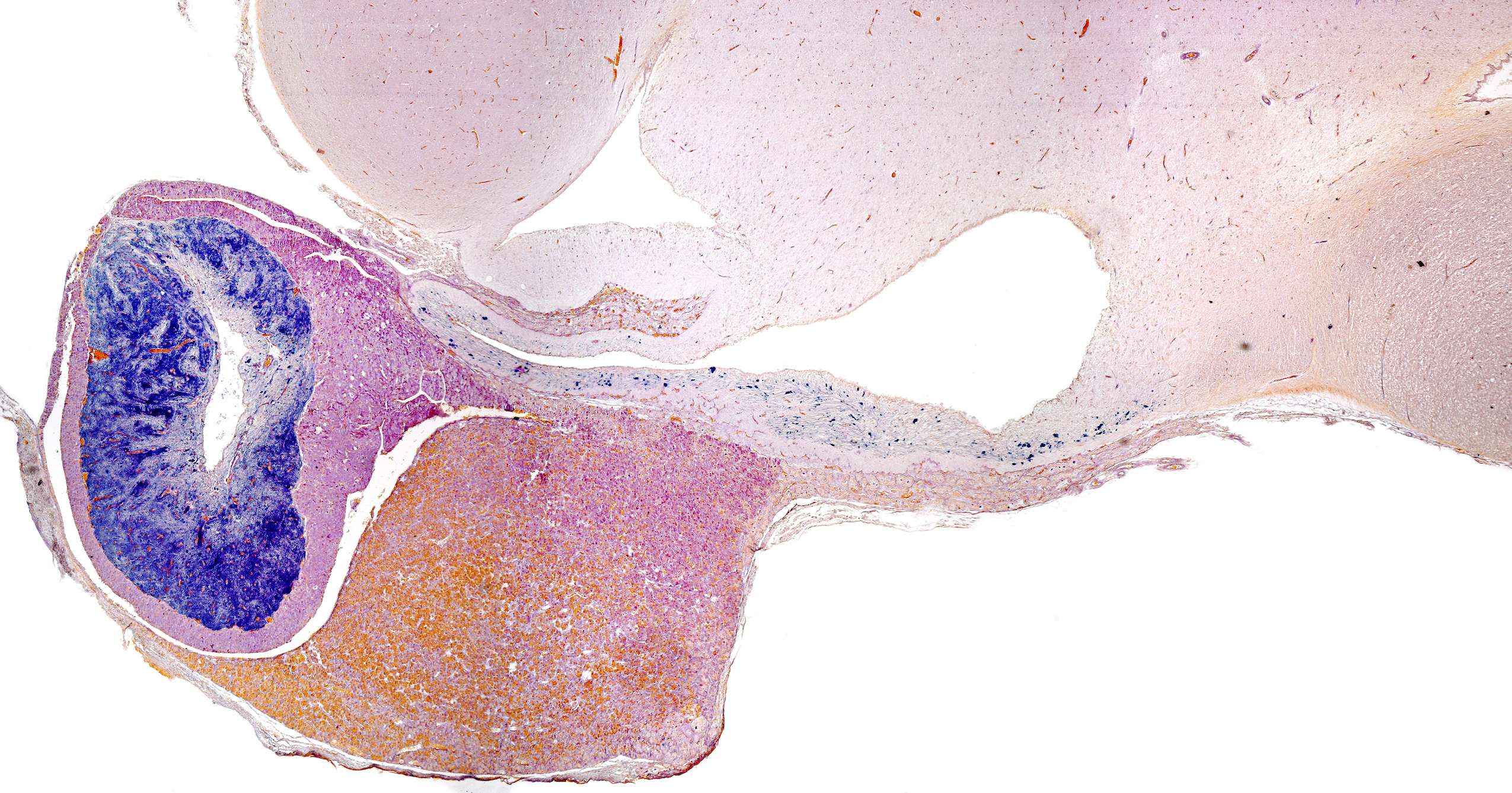The best place to start is remembering that we’re on a planet that rotates on its axis every 24 hours, which means that we experience periods of dark and light. We all go to sleep at night and wake up in the morning, and so we’re aware of this 24-hour rhythm. Our body has adapted exceptionally well to this; it makes sure that our brain is functioning at its very best during the day when we’re awake, and when we’re sleeping at night, all the recuperative processes go on. In addition to the 24-hour rhythm, about 50% of the population are extremely aware of monthly rhythms – women’s menstrual cycles. We also have yearly rhythms. Unless you’re on the equator, there’s a summer and a winter. For a lot of animals, this is critically important because they need to have their offspring at a time when food is plentiful. In addition, we have other rhythms that are faster, called ultradian rhythms, which occur more than once every 24 hours – our stress hormone cortisol, particularly in humans, has a rhythm which goes up and down about every hour.
We have multiple rhythms that occur in the body, and these rhythms all interact with each other so that, for instance, stress not only interacts with your stress hormone systems, but it also interacts with your reproductive systems. If you experience major stress, it will make it more difficult for you to reproduce. If everything is in a perfect situation, then it allows your normal physiology to go ahead – it allows you to eat, drink and reproduce.
Stress response hormones
Most of the work I do is entirely dependent on me working with mathematicians because the only way to work out the complexities of these systems is by mixing mathematics, to make predictions, and us, as biologists, to test these predictions. The system that I work on most of all is the hypothalamic-pituitary-adrenal axis, the so-called stress response.
Our hypothalamus is in the centre of the brain. It produces chemical messages which go down to your pituitary gland, which is about an inch behind the bridge of the nose. The pituitary gland secretes hormones which go around the body and in turn cause your adrenal glands to secrete the hormone cortisol in a circadian manner. The importance of cortisol is that it’s an anticipatory hormone. It goes up before you need it. During the night, the levels get very low because you don’t need much cortisol, but in anticipation of waking up, at about three or four in the morning, it reaches very high levels. It’s a circadian rhythm.
But this circadian rhythm isn’t flat. It’s a series of pulses of cortisol, which are biggest in the morning and get smaller as you go through to the evening, finally becoming small pulses of cortisol at night. The reason for these pulses is that there is a feedforward and a feedback interaction: our pituitary gland makes the hormone ACTH, which stimulates the adrenal glands. The adrenal glands then produce the hormone cortisol, which goes through the blood back to the pituitary glands and turns them off. So you’ve got one stimulatory branch from the pituitary to the adrenal and an inhibitory branch from the adrenal to the pituitary.
A delay in the system
An essential factor to take into account is that there is a delay in the system. When the hormone ACTH produced by the pituitary hits the adrenal, the adrenal cannot store cortisol, so it has to synthesise it newly. So ACTH hits the adrenal, the adrenal newly synthesises cortisol, and with a delay of around 15 minutes, you then get a peak of cortisol. This peak of cortisol then turns the pituitary off. In mathematical terms, you have a feedforward and a feedback situation that has a delay in it. For mathematical reasons, any feedforward-feedback situation with a delay in it has to oscillate. Indeed, this is what happens. So you’ve got an oscillating level of both ACTH, the hormone secreted by the pituitary, and cortisol, the hormone secreted by the adrenal glands.
The fact that you have this oscillating system between the pituitary and the adrenal glands means that the hormone cortisol itself is oscillating, going up and down in the plasma and the tissues throughout the whole of the day. Your tissues, which are the organs that sense and respond to the cortisol, are seeing an oscillating signal, not an analogue one. It’s rather like AC and DC, where you have a signal which you can read both by the level of the hormone but also by the pattern of the hormone that is being secreted. So what happens when you stress an animal? The animal has a large surge of ACTH and a large surge of cortisol, and this interacts with the feedforward-feedback situation, disrupting it and changing the mechanics of it and causing a large peak in cortisol. Your body tissues then interpret this peak in cortisol in a different way from the regular pattern of just oscillating levels of cortisol.
When females are stressed
We have evidence that the reproductive axis also reads this surge in cortisol, which is the reason female animals lose their periods and become temporarily infertile when they are stressed. The stress system, therefore, also interacts with the reproductive system. The reproductive system itself is impressive because it also oscillates: there are oscillating levels of testosterone in males and oestrogen in females. This is due to another feedforward-feedback situation, but, interestingly, it’s a completely different level. We know that the feedforward-feedback situation for the stress axis is beneath the hypothalamus, but for reproductive hormones, it’s within the hypothalamus. This causes oscillations of a peptide called kisspeptin, which controls the secretion of the gonadal hormones. All of these interact with each other in normal physiology. When you undergo stress, they will be disrupted.
All mammals have a body clock
We’ve all adapted and evolved because we’re on this rotating planet – even very primitive organisms like bacteria have body rhythms which vary between day and night. All mammals have got a body clock called the suprachiasmatic nucleus in the hypothalamus, which is the clock that predicts the need for your 24-hour cycle. Even if you take this body clock out of an animal and put it in a dish, it still fires every 24 hours. Of course, we’re all adapted differently – some animals are nocturnal, and the whole of their body rhythms are adapted to being awake at night. Their body clock responds to light in the same way; however, their brain interprets it the other way round so that they turn on their cortisol – or, in many animals, corticosterone – to be at maximum early in the evening so that when they’re active, their brain is functioning at its best. Their cortisol levels are highest, decreasing throughout the night. We all have the same essential body clock, but it can be adapted in different ways, depending on whether we’re diurnal, like humans, or nocturnal, like a lot of other animals.
The influence of light
The significant entraining influence on mammals is light. If you put an animal in total darkness, it will maintain a 24-hour rhythm because your suprachiasmatic nucleus has its own approximately 24-hour rhythm, but it is maintained exactly 24 hours by light and dark. If you put animals into 24-hour darkness, they will drift away from the usual 24 hours. If you put them in constant light, it will completely disrupt their system, and within a few weeks, the 24-hour cycle will be lost entirely. This happens because you’ve got specific cells in the retinal ganglion cells that have got a pigment called melanopsin. This particular pigment responds to light and dark, and it sends signals back to your body clock – to your suprachiasmatic nucleus – to keep it locked on to the normal 24-hour cycle.
There are other signals to maintain your 24-hour clock as well as light and dark. One of them is food. Food is a major entrainer of lots of the body rhythms in the body, particularly in the liver, because every time you eat, your food stimulates a lot of the activity of the cells within your liver, and a lot of the 24-hour rhythm in the liver is entrained by food. So you have multiple different stimuli. But in humans, the major one is light.
A classic disruption we can observe in the body is shift work. Shift work is a real problem. Shift workers who need to be up at night rather than the day disrupt their cycle. It is now well known that people who have shift work are at much greater risk of many diseases. Depression is much more frequent, but if you go across the whole range of diseases, they’re more likely to get cardiovascular disease and cancer. They’re more likely to get almost every disease there is. Even our immune system has its daily rhythms, and if you disrupt those daily rhythms by, for instance, being a shift worker, your immune system will not work as well. It will not be able to adapt to changes so well, and you will be more likely to get disease.
Being aware of our body rhythm and sleep regularity is extremely important. It’s particularly important in young people and in adolescents who need much more sleep. But these are now people who have a tendency to be using their computers late at night and who are getting up early in the morning, disturbing their regular sleep schedule. We shouldn’t have a lot of bright lights at night, and we shouldn’t be disrupting our sleep rhythm much. It’s also crucial for companies employing people on shift work to understand that they need to think about the patterns of sleep and wake of the people working for them for these people’s health. Understanding and adapting your life to make sure that you can maintain a good body rhythm is critical.
Discover More About
Body Rhythms
Lightman, S. (2016). Rhythms Within Rhythms: The Importance of Oscillations for Glucocorticoid Hormones. In P. Sassone-Corsi, & Y. Christen (Eds.), A Time for Metabolism and Hormones, 87-99. Springer.
Dzogang, F., Lightman, S., & Cristianini, N. (2017). Circadian mood variations in Twitter content. Brain and Neuroscience Advances, 1, 1–14.
Oster, H., Challet, E., Ott, V., et al. (2017). The Functional and Clinical Significance of the 24-Hour Rhythm of Circulating Glucocorticoids, Endocrine Reviews, 38, 3–45.


